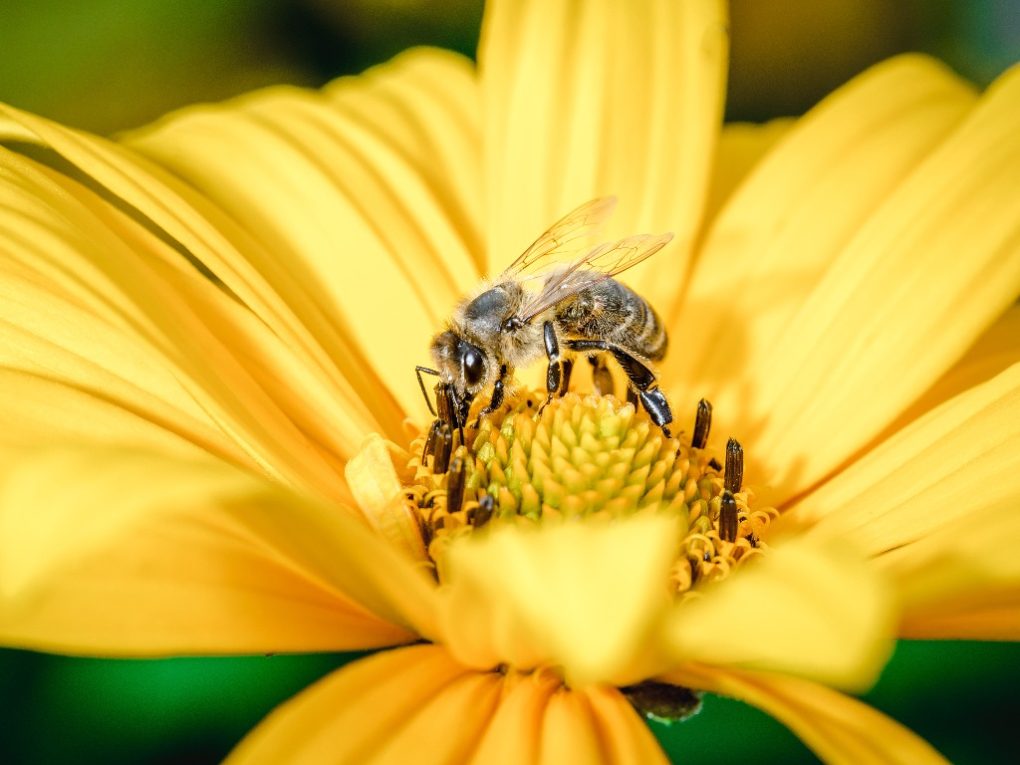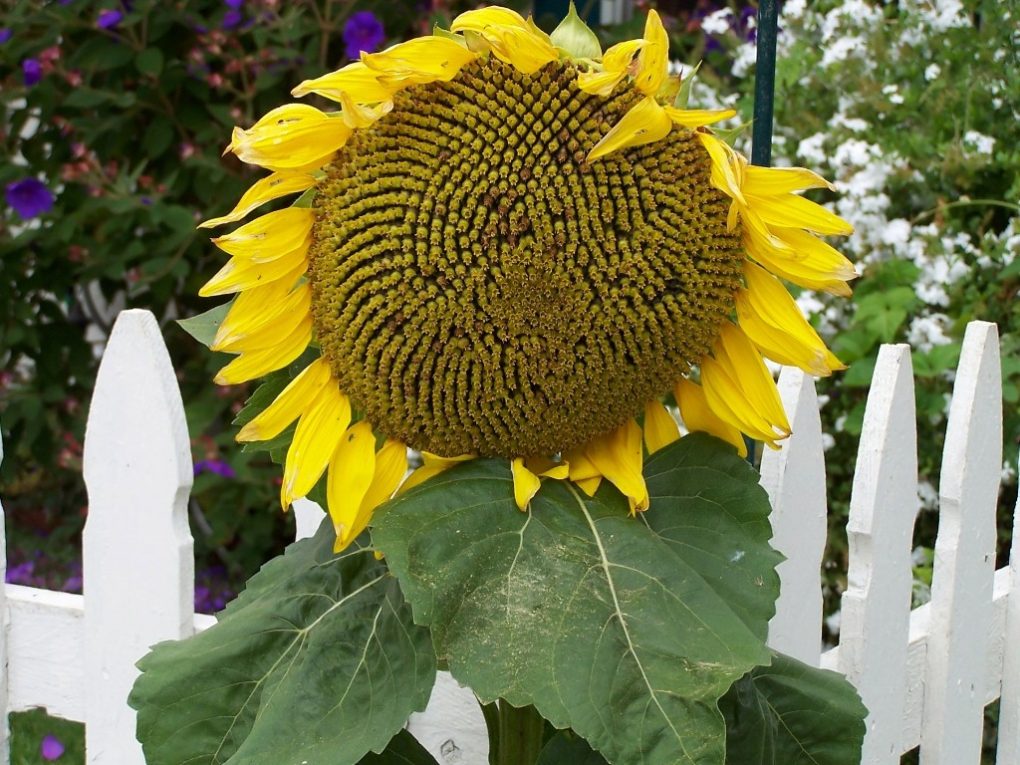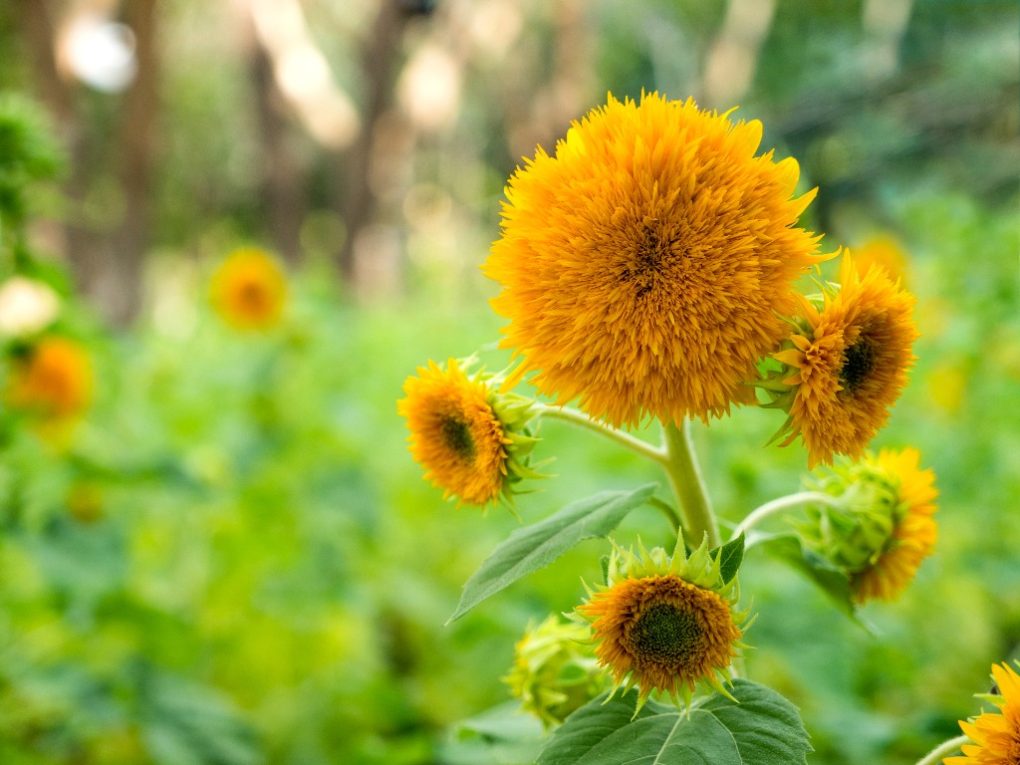Do Bees Like Sunflowers: Reasons Why Bees Like Sunflowers
Yes, bees love sunflowers! Sunflowers are an excellent source of nectar and pollen for bees, and they are attracted to bright yellow petals and large flower heads. The flower heads of sunflowers contain many small individual flowers, called florets, which produce nectar and pollen that bees and other pollinators feed on. It’s important to note that pesticides on sunflowers or other plants can harm bees and other pollinators.
Table of Contents
Reasons Why Bees Like Sunflowers

Abundant Nectar and Pollen
According to UC Davis Honey and Pollination Center, sunflowers produce abundant nectar and pollen, essential food sources for bees and other pollinators. The large flower heads of sunflowers contain many small individual flowers, called florets, which produce nectar and pollen that bees feed on.
Nectar is a sugary liquid produced by plants to attract pollinators like bees. When bees visit the flowers of sunflowers, they collect nectar from the base of the florets using their tongues. The nectar provides bees the energy to fly and carry out their important pollination activities.
On the other hand, pollen is a powdery substance produced by the male part of a flower. When bees visit the flowers of sunflowers, they collect pollen on their bodies and transfer it to other flowers as they move around. This transfer of pollen between flowers is essential for fertilization and the production of seeds.
Sunflowers provide a valuable food source for bees and other pollinators by producing abundant nectar and pollen. This helps to support healthy bee populations and promote biodiversity in natural ecosystems.
Bright Color
Another reason why bees like sunflowers are because of their bright color. Sunflowers have yellow, orange, or red petals, which are highly attractive to bees and other pollinators. Bees have color vision and are particularly sensitive to blue, green, and ultraviolet, so they are attracted to sunflowers’ bright yellow and orange petals.
The color of the petals helps bees to identify the flowers and locate them quickly, making it easier for them to collect nectar and pollen. The petals’ brightness also signals to bees that the flower is recently opened and has fresh nectar and pollen available.
In addition, sunflowers have a unique flower structure that allows bees to access the nectar and pollen easily. The large flower head and flat landing surface of sunflowers make it easy for bees to land and move around the flower to collect nectar and pollen. This accessibility is another reason why bees are attracted to sunflowers.
Large Size
Sunflowers are one of the largest flowers in the world, and their size also contributes to their attractiveness to bees. The large flower head of sunflowers can measure up to a foot in diameter, which provides a large surface area for bees to land on and move around as they collect nectar and pollen.
The size of the sunflower also means that it produces more nectar and pollen than smaller flowers, making it a more attractive food source for bees. This abundance of resources allows bees to spend less time foraging and more time reproducing, which is essential for maintaining healthy bee populations.
The large size of sunflowers also means they can attract various bee species, including bumblebees, honeybees, and native bees. Each bee species has different preferences regarding flower size and shape, and sunflowers provide a large and diverse enough range to cater to various bee species.
Long Blooming Period
Another reason why bees like sunflowers are their long blooming period. Sunflowers can bloom for several weeks, and some varieties can last up to two months. This extended blooming period means that bees have a reliable source of nectar and pollen over an extended period, which is important for maintaining healthy bee populations.
Sunflowers bloom in succession, with new flowers opening up as old ones fade. This means there is always a fresh supply of nectar and pollen available for bees to collect, making sunflowers an important food source for bees throughout the summer.
The extended blooming period of sunflowers is also beneficial for beekeepers, as it provides a reliable food source for their honeybees during the leaner months of the year. The high nectar and pollen content of sunflowers makes them an important crop for honey production, and many beekeepers plant sunflowers specifically to provide food for their bees.
Easy Access

The structure of the sunflower also makes it easy for bees to access the nectar and pollen. Sunflowers have a large central disc that is made up of hundreds of tiny flowers called florets. These florets contain male and female reproductive parts and are surrounded by colorful petals that attract pollinators.
The central disc of the sunflower is open and flat, making it easy for bees to land and move around as they collect nectar and pollen from the florets. The flat shape of the central disc also means that the nectar and pollen are easily accessible to bees, with no obstacles or barriers to hinder their movements.
The openness and accessibility of the sunflower make it a popular flower for bees, as they can easily navigate around the flower and collect the resources they need. This ease of access is particularly important for bees with short tongues, as they may struggle to reach the nectar in flowers with deep or narrow corollas.
List of Sunflowers for Honey Bees
Russian Mammoth Sunflower
The Russian Mammoth Sunflower is a popular and well-known variety of sunflower favored for its large size and abundant blooms. It is a tall variety, typically growing to heights of 10-12 feet, and can produce multiple flowers per stem, each reaching up to 12 inches in diameter.
The Russian Mammoth Sunflower is known for its high yield of seeds, making it a popular choice for those who wish to harvest sunflower seeds for eating or bird feed. It also has a long blooming period, producing nectar and pollen for several weeks, making it an excellent food source for bees and other pollinators.
This variety of sunflowers is relatively easy to grow and requires a sunny location with well-drained soil. It is best to plant the seeds in the spring after the danger of frost has passed. The plants should be spaced at least 2 feet apart to allow for their large size, and they should be watered regularly to keep the soil moist.
Lemon Queen Sunflower
The Lemon Queen Sunflower is a beautiful variety known for its striking yellow petals and dark centers. It is a relatively short variety, typically growing to heights of 5-7 feet, and produces large blooms that can reach up to 8 inches in diameter.
Like many other sunflowers, the Lemon Queen Sunflower is a favorite of bees and other pollinators, as it produces abundant nectar and pollen. It’s bright color and easy accessibility make it an attractive option for pollinators, and it has a relatively long blooming period, producing flowers for several weeks in the summer.
The Lemon Queen Sunflower is relatively easy to grow and requires a sunny location with well-drained soil. It is best to plant the seeds in the spring after the danger of frost has passed. The plants should be spaced at least 2 feet apart and watered regularly to moisten the soil.
In addition to its benefits as a pollinator plant, the Lemon Queen Sunflower is also a beautiful addition to any garden or landscape. Its vibrant yellow color can brighten up any space and is a popular choice for cut flowers.
Autumn Beauty Sunflower
The Autumn Beauty Sunflower is a popular variety of sunflowers known for its vibrant colors and large, showy blooms. It typically grows to heights of 5-7 feet and produces multiple flower heads per stem, each measuring up to 8 inches in diameter.
Like other sunflowers, the Autumn Beauty variety is also a favorite of bees and other pollinators due to its abundant nectar and pollen. The flowers bloom in late summer and continue into the fall, providing a valuable pollinator food source.
Regarding cultivation, the Autumn Beauty Sunflower prefers a sunny location with well-drained soil. The seeds can be sown directly in the ground in the spring after the last frost or started several weeks indoors before planting. The plants should be spaced at least 2 feet apart and watered regularly to moisten the soil.
One of the unique features of the Autumn Beauty Sunflower is the range of colors that the blooms can display. The petals can range from deep reds and oranges to warm yellows and browns, creating a stunning display of autumn colors in the garden or landscape.
Teddy Bear Sunflower

The Teddy Bear Sunflower is a popular variety of sunflowers known for its unique appearance and smaller size. It typically grows to 2-3 feet in height and produces a single flower head per stem, each measuring up to 6 inches in diameter.
The name “Teddy Bear” refers to the flower head’s appearance, which resembles a fluffy teddy bear with a brown center and bright yellow petals. This makes it a popular choice for children’s gardens or for adding a whimsical touch to the landscape.
Like other sunflowers, the Teddy Bear variety is also attractive to bees and other pollinators due to its abundant nectar and pollen. The flowers bloom in the summer, providing a valuable pollinator food source.
Regarding cultivation, the Teddy Bear Sunflower prefers a sunny location with well-drained soil. The seeds can be sown directly in the ground in the spring after the last frost or started several weeks indoors before planting. The plants should be spaced at least 1 foot apart and watered regularly to moisten the soil.
The Teddy Bear Sunflower is a popular choice for container gardens or smaller garden spaces, as its smaller size allows it to be grown in various settings. It is also popular for cut flower arrangements due to its unique appearance and bright color.
